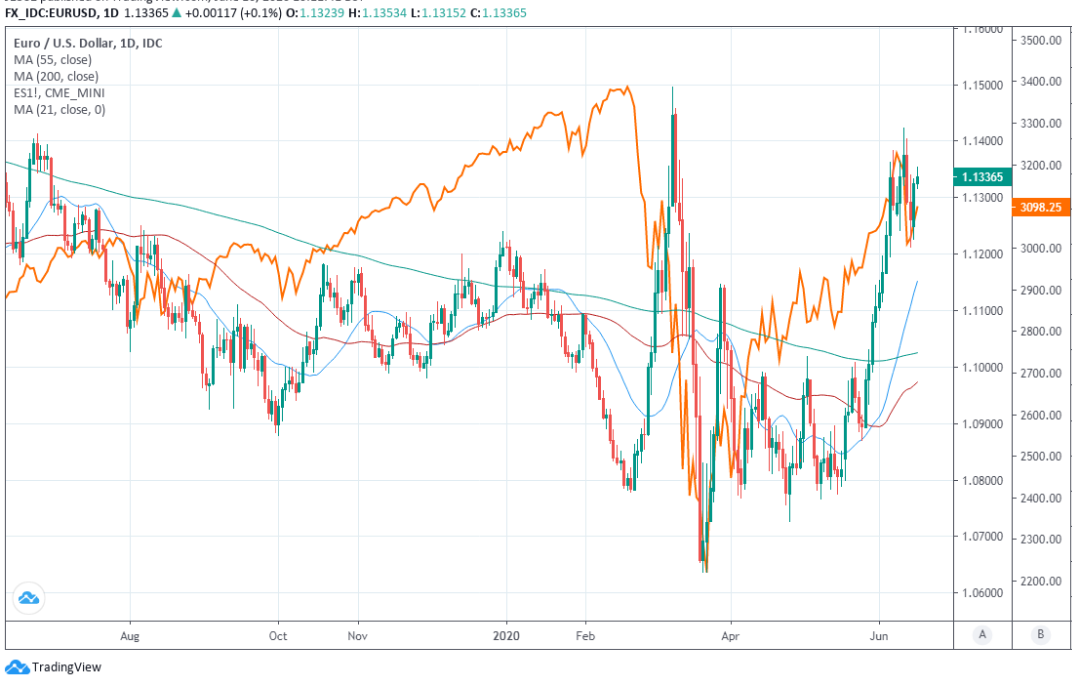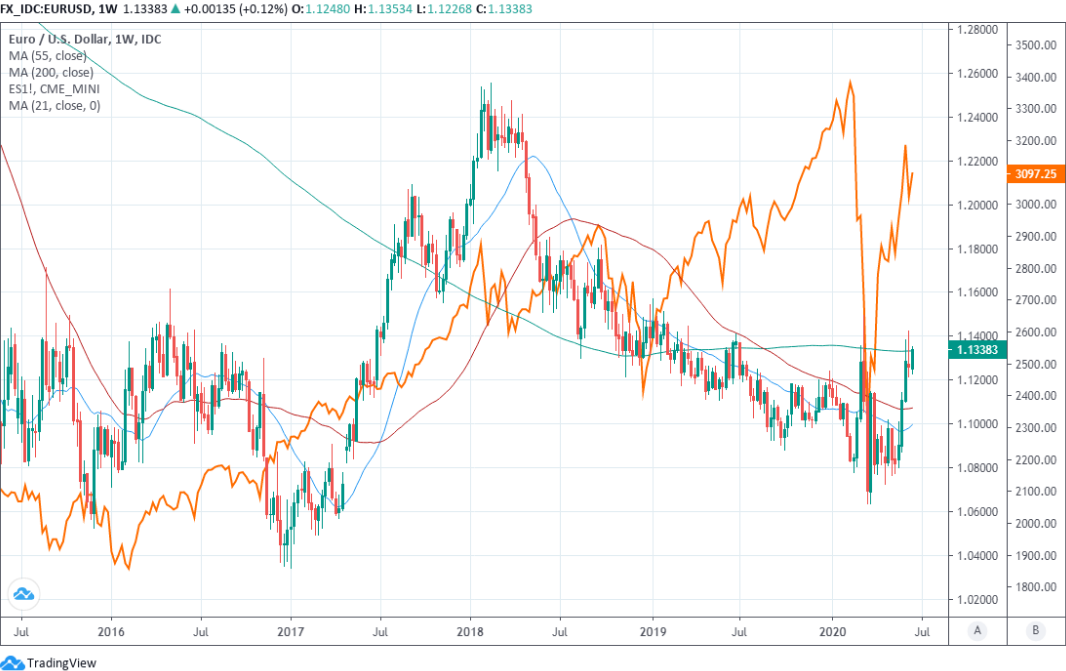Euro-to-Dollar Rate Holds Near Recent Highs, German Confidence Grows According to ZEW Survey

Above: Lady Justice statue, Frankfurt © Adobe Images
Achieve up to 3-5% more currency for your money transfers. Beat your bank's rate by using a specialist FX provider: find out how.
The Euro held onto much of Monday's 0.5% gain against the Dollar on Tuesday as markets digested improving data out of Germany where the much-watched ZEW survey for June beat economist expectations, but further direction in the single currency will likely be determined by geopolitical developments and Thursday's European Council meeting.
Europe's unified unit was a fraction lower Tuesday following the strong start to the new week after the June ZEW survey surprised on the upside, with the confidence barometer for Germany rising from 51.0 to 63.4 when the consensus was for an increase to only 60.
The Eurozone barometer rose from 46.0 to 58.6 when markets were looking for a reading of 53.4.
"There is growing confidence that the economy will bottom out by summer 2020. This is reflected in the renewed rise of the ZEW Indicator of Economic Sentiment as well as the more optimistic assessment of the current situation. The expected earnings for the individual sectors in Germany still vary greatly," says Professor Achim Wambach, president of the ZEW institute.
The ZEW is a German survey that asks 300 financial experts for their opinions on various questions relating to the markets and economy. June's rebound reflects optimism among analysts and investors that's risen in recent weeks as more major economies took further steps to reopen, while European politicians have indicated willingness to compromise in negotiations over the European Commission's recovery fund proposals.
"Amid lingering risks to the outlook, financial markets may have advanced too fast, too much. Temporary corrections, like last week’s in markets, may happen again. In the same vein, ZEW expectations may not rise much further in the next few months or may even correct temporarily as the return to pre-crisis activity levels will take years," says Florian Hense, an economist at Berenberg.
The Euro-to-Dollar rate went into retreat following Tuesday's ZEW survey although publication coincided closely with reports of increased geopolitical tensions in some parts of the world, most notably between India and China after a border dispute between the two errupted in clashes that were reported to have led to a loss of life on both sides. Tensions between North and South Korea were also on the increase.
"EUR/USD lifted towards 1.1340 because of the weak USD," says Kim Mundy, a strategist at Commonwealth Bank of Australia. "Friday’s European Council meeting on Friday is key for EUR. Any signs the “frugal four” soften their stance against an EU wide recovery fund financed in large part by grants rather than by loans would push EUR/USD higher."
Above: Euro-to-Dollar rate shown at daily intervals with various moving-averages and S&P 500 futures (orange line).
"Ironically, equities rallied the most on the news, with corporate bonds posting smaller gains. However, the latest step by the Fed shows that on a risk-return basis, credits and high yield still offer good value. Hence, we are sticking to our overweight in both asset classes," says Jeroen Blokland, a multi-asset portfolio manager at Robeco, a buy-side fund house with €171bn (£151bn) under management in 2019.
Europe's single currency was treading water while safe-havens were higher in an apparent contradiction of the raucous mood evident in stock markets that have been buoyed this week by the Federal Reserve (Fed) decision to broaden the scope of its corporate asset purchase program and speculation about plans the White House might have for infrastructure spending. Both lifted risk assets in the prior session, ensuring a strong start to the week for the Euro.
"The proposal of a European Recovery Fund has materially brightened the longer-term outlook for the euro, and we have revised up our forecast for the EUR-USD pair to 1.15 towards year-end," says Dr Claudlo Wewel, an FX strategist at J. Safra Sarasin. "Along with these developments, the euro recovery continues to be supported by the Fed’s unprecedented balance sheet expansion rate in excess of the ECB. Lastly, the diminished US-dollar yield advantage has virtually eliminated the risk for a resumption of the USDEUR carry trade (with the euro as funding currency)."
Geopolitical tensions and policy action were competing for the market's attention Tuesday but the highlight of the week for the Euro is arguably Thursday and Friday's EU Council meeting in which national leaders are expected to debate the European Commission's proposal for a €750bn budget-funded recovery fund comprised of grants and loans for over-indebted member states who're struggling with the cost of the virus. The plans have been key to a recent turn for the better in appetite for the single currency.
"With the European Council summit approaching - and the possibility of headline risk related to the Rescue Fund proposal - EURUSD is now a much tougher trade. Our base case is that "risk appetite" will win out and allow for higher levels to come into view, but that leaves the appropriate entry point open to debate. The safer and preferred way of trading the pair is to wait for a close above 1.1400 to get long. The bolder option is to buy at 1.1320 with a stop-loss just below 1.1200," says Stephen Gallo, European head of FX strategy at BMO Capital Markets.
Above: Euro-to-Dollar rate shown at weekly intervals with various moving-averages and S&P 500 futures (orange line).






